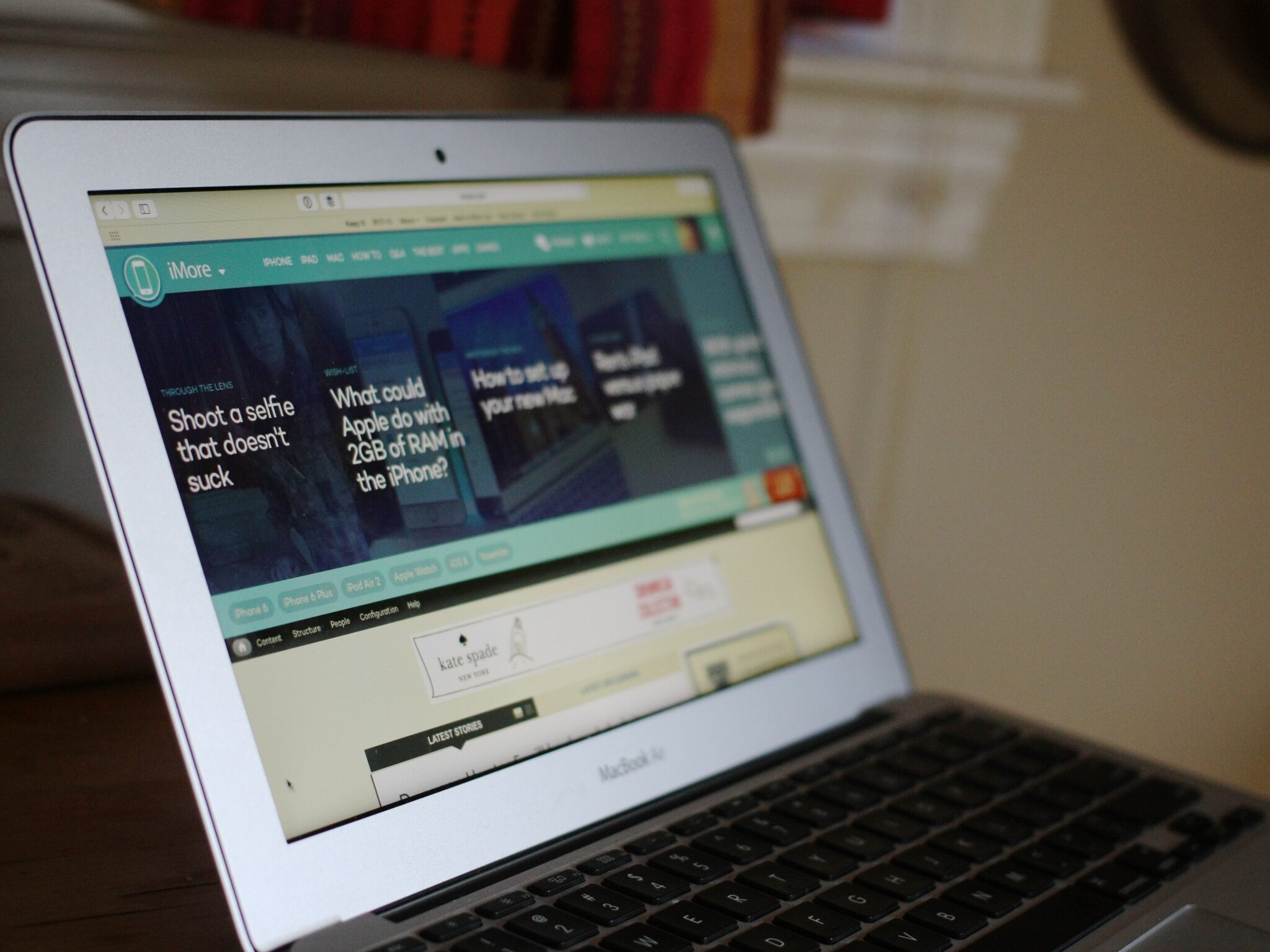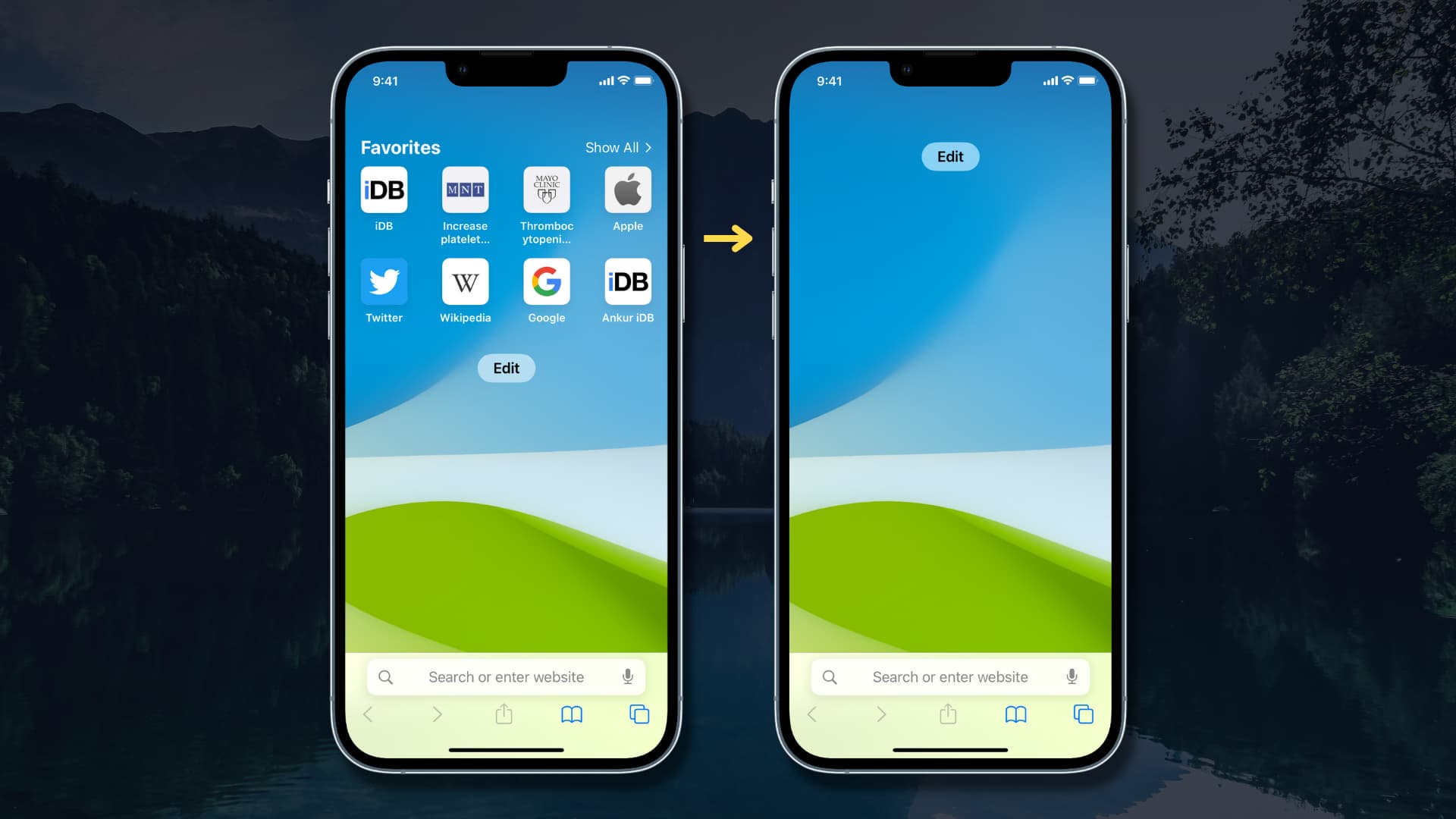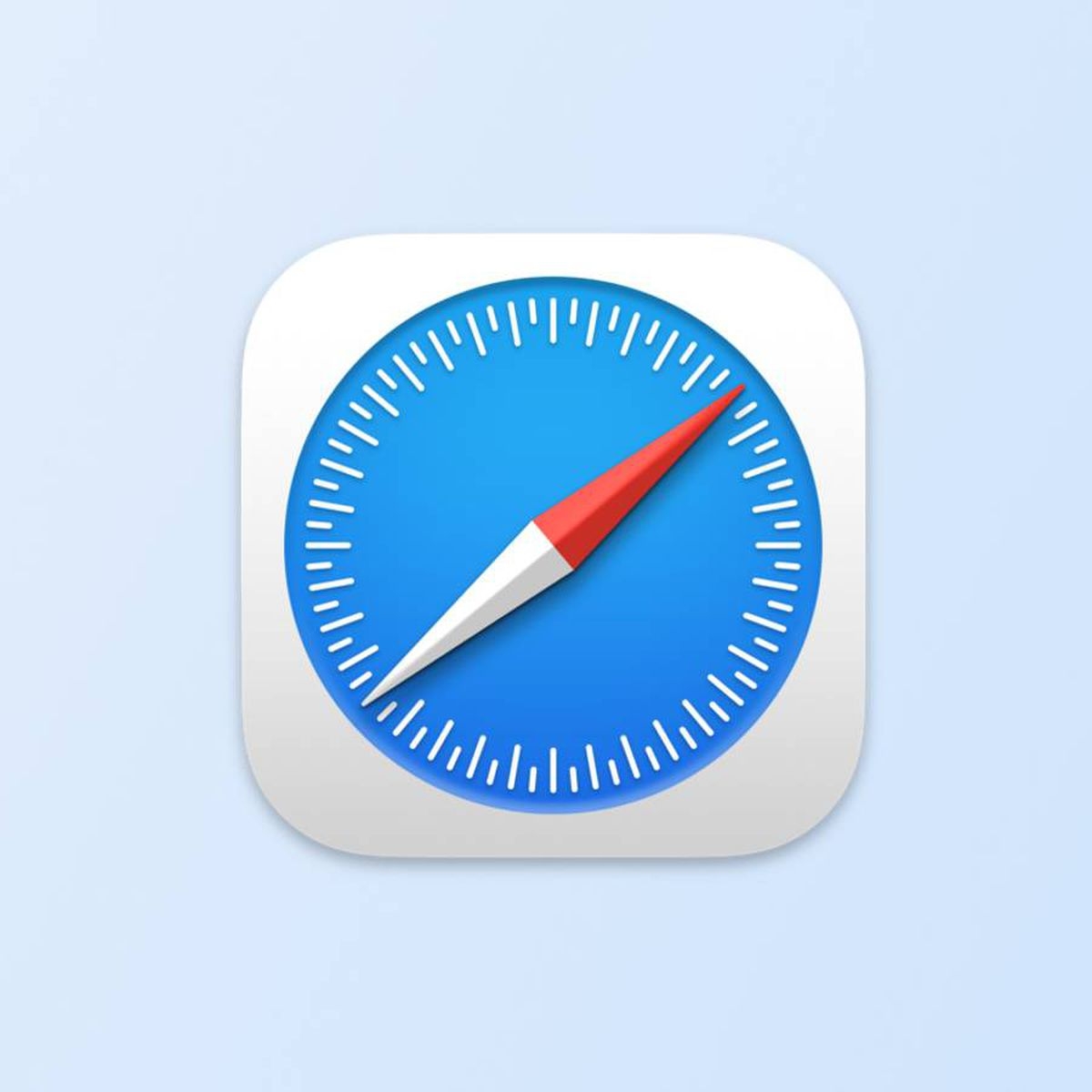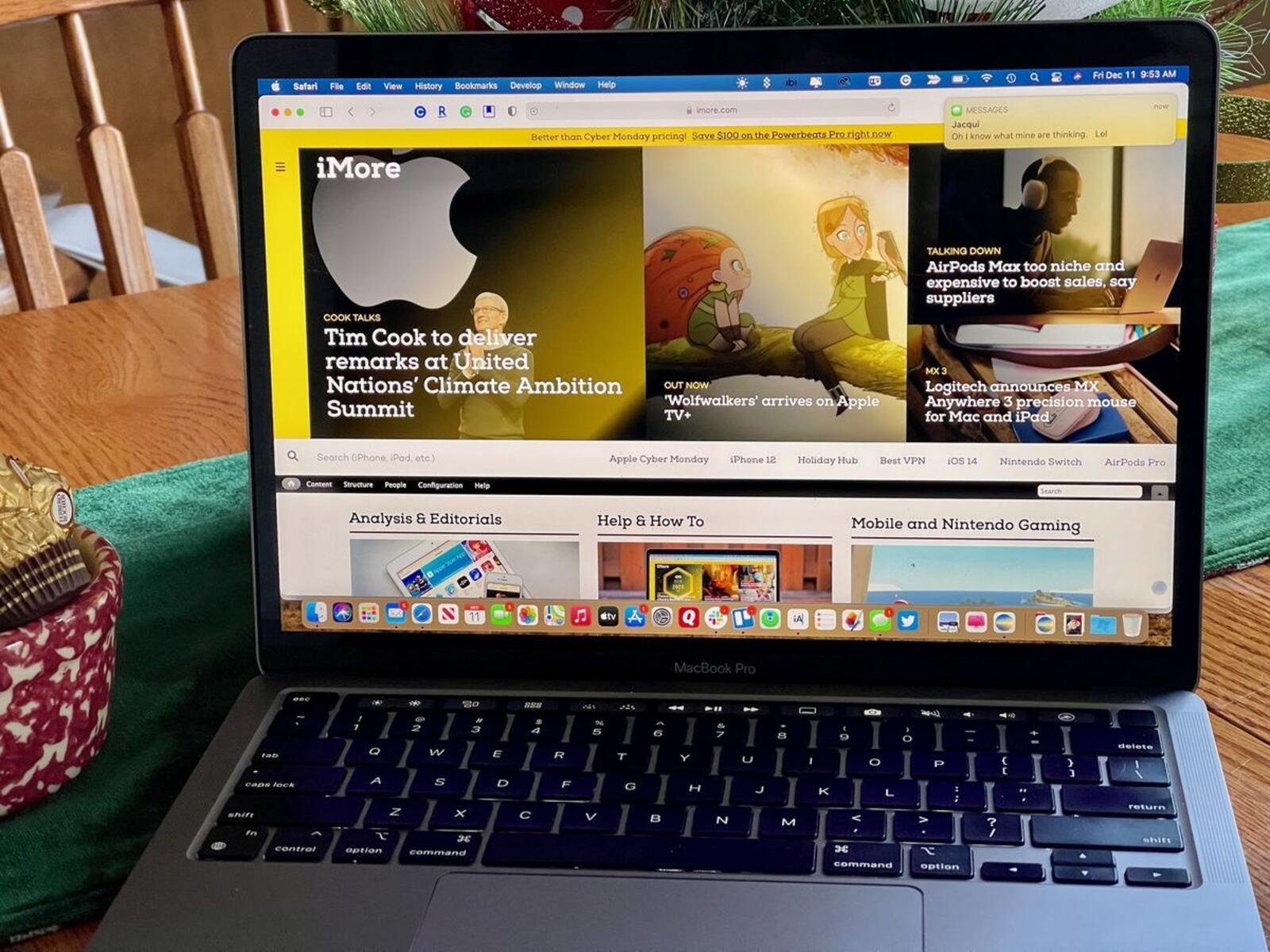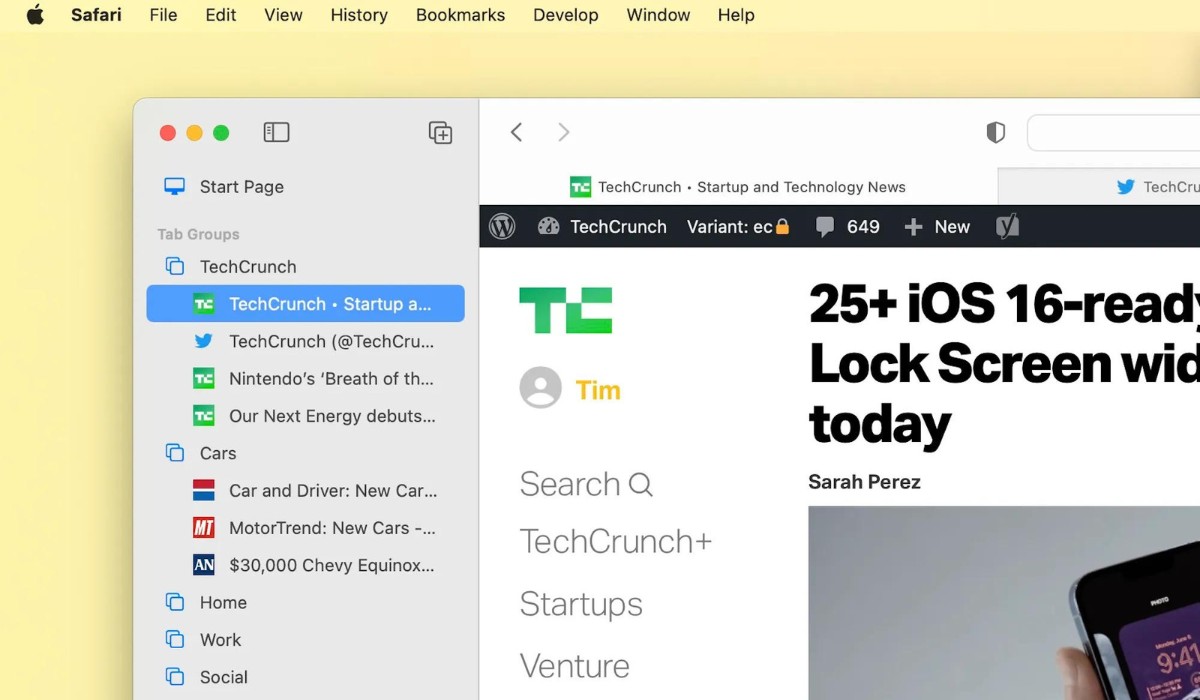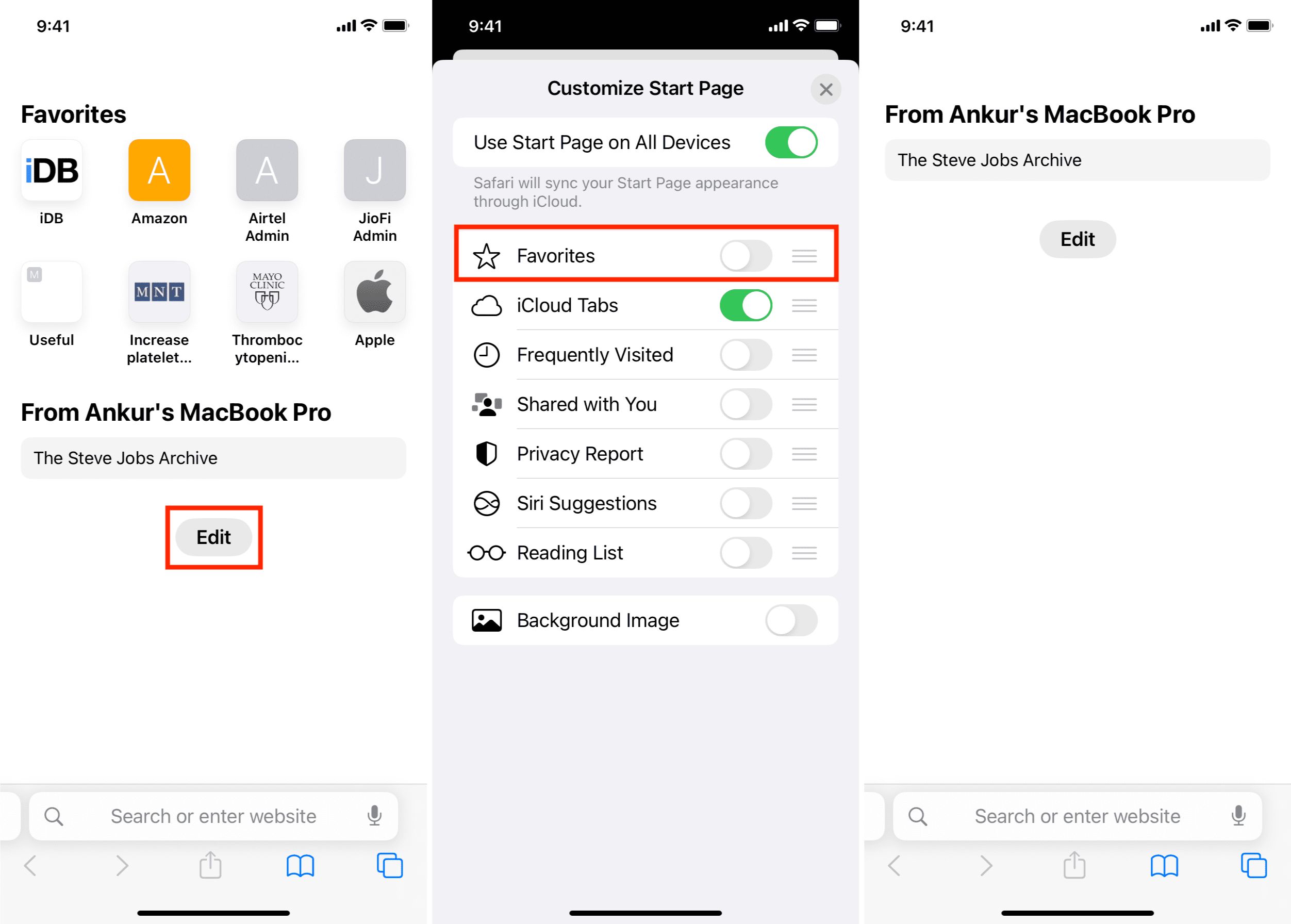Introduction
Safari, the default web browser for Mac, offers a sleek and user-friendly interface. However, some users may prefer a more streamlined browsing experience by hiding the top bar in Safari. Whether it's to maximize screen space, reduce distractions, or simply for a change in aesthetics, there are several methods to achieve this customization.
In this article, we will explore three different approaches to hiding the top bar on Safari for Mac. The first method involves utilizing Safari's built-in preferences, providing a straightforward and native solution. The second method delves into using Terminal commands, offering a more advanced and customizable approach for tech-savvy users. Lastly, we will discuss the option of using third-party apps, which can offer additional features and customization options beyond the built-in capabilities of Safari.
Each method has its own advantages and considerations, catering to a diverse range of user preferences and technical proficiency. By understanding these methods, users can tailor their browsing experience to suit their individual needs and preferences.
Now, let's delve into each method to uncover the steps and considerations involved in hiding the top bar on Safari for Mac. Whether you're a casual user seeking a quick and easy solution or a tech enthusiast eager to explore advanced customization options, this article has you covered. Let's embark on this journey to unlock the potential of Safari and personalize your browsing experience to perfection.
Method 1: Using Safari Preferences
Safari offers a convenient and user-friendly method to hide the top bar directly through its built-in preferences. This approach is ideal for users who prefer a simple and native solution without the need for additional software or technical expertise.
To begin, open Safari on your Mac and navigate to the top menu bar. Click on "Safari" and select "Preferences" from the dropdown menu. This action will open the Preferences window, where you can access various settings to customize your browsing experience.
Within the Preferences window, click on the "Advanced" tab located at the far right. Here, you will find a checkbox labeled "Show Develop menu in menu bar." By enabling this option, you will reveal the Develop menu in the top bar of Safari.
Once the Develop menu is visible, click on it to reveal a dropdown menu. From the options presented, select "Hide Toolbar." This action will effectively hide the top bar in Safari, providing a clean and minimalist browsing interface.
It's important to note that while hiding the top bar can maximize screen space and reduce visual clutter, it may also impact the accessibility of certain features, such as the address bar and navigation buttons. Users should consider their browsing habits and workflow to determine if this customization aligns with their preferences.
Furthermore, this method offers a reversible solution, allowing users to easily restore the top bar by following the same steps and selecting "Show Toolbar" from the Develop menu.
By leveraging Safari's preferences, users can seamlessly customize their browsing experience without the need for complex configurations or third-party tools. This method exemplifies the user-centric design of Safari, empowering users to personalize their browser interface with ease.
In summary, utilizing Safari preferences to hide the top bar provides a straightforward and accessible solution for users seeking a minimalist browsing experience. With just a few clicks, users can declutter their interface and immerse themselves in a distraction-free browsing environment, tailored to their unique preferences and workflow.
Method 2: Using Terminal Commands
For users who are comfortable with advanced customization and seek a more granular control over Safari's interface, utilizing Terminal commands presents an alternative method to hide the top bar on Mac. This approach delves into the underlying system configurations, offering a higher degree of flexibility and customization options.
To initiate this method, users can access the Terminal application on their Mac. Terminal serves as a command-line interface, allowing users to interact with the operating system at a deeper level. It's important to exercise caution and ensure accuracy when entering commands in Terminal, as improper commands can potentially impact system functionality.
Once Terminal is open, users can enter the following command to hide the top bar in Safari:
bash
defaults write com.apple.Safari AutoHideToolbarInFullScreen -bool true
After entering the command, press the "Enter" key to execute it. This command instructs Safari to automatically hide the toolbar when in full-screen mode, providing a seamless and immersive browsing experience. Users can then close the Terminal application and proceed to test the functionality in Safari.
It's worth noting that this method introduces a specific behavior to Safari, where the toolbar will be hidden exclusively in full-screen mode. This can be advantageous for users who prioritize a minimalist interface during focused browsing sessions while retaining the toolbar accessibility in standard viewing modes.
Should users wish to revert this customization and restore the default toolbar visibility, they can utilize the following command in Terminal:
bash
defaults write com.apple.Safari AutoHideToolbarInFullScreen -bool false
Executing this command will disable the auto-hide functionality, ensuring that the toolbar remains visible in full-screen mode.
By leveraging Terminal commands, users can delve into the intricacies of Safari's configurations, tailoring the browsing experience to align with their preferences and workflow. This method empowers users with a deeper level of control, allowing for nuanced adjustments to Safari's interface behavior.
In summary, utilizing Terminal commands to hide the top bar in Safari offers a customizable and advanced approach for users who seek a more granular control over their browsing environment. By harnessing the power of Terminal, users can unlock a new realm of customization, shaping Safari to suit their individual preferences and browsing habits.
Method 3: Using Third-Party Apps
In addition to the native options provided by Safari and the advanced customization available through Terminal commands, users have the option to explore third-party apps designed to enhance and personalize their browsing experience. These apps offer a diverse range of features and customization options, extending beyond the built-in capabilities of Safari and catering to a wide spectrum of user preferences.
One notable third-party app that facilitates the customization of Safari's interface is "TotalSpaces2." This app, designed to optimize the management of desktop spaces on Mac, offers a unique feature that allows users to hide the top bar in Safari. By leveraging TotalSpaces2, users can seamlessly declutter their browsing interface, maximizing their screen real estate and minimizing distractions during web browsing sessions.
TotalSpaces2 provides a user-friendly interface, enabling users to configure various aspects of their desktop environment, including Safari's top bar visibility. With intuitive controls and customizable settings, users can effortlessly tailor their browsing experience to align with their preferences, whether it involves hiding the top bar for a minimalist interface or restoring its visibility as needed.
Furthermore, TotalSpaces2 offers additional features that complement the customization of Safari, such as window management tools, hotkey customization, and fluid transitions between desktop spaces. This holistic approach to desktop optimization empowers users to create a personalized and efficient workflow, seamlessly integrating with Safari's interface customization for a cohesive browsing experience.
Another notable third-party app, "Fluid," presents a unique solution for users seeking a dedicated browsing experience within a standalone application. Fluid allows users to create site-specific browsers (SSBs) for their favorite web apps and websites, effectively encapsulating them in a separate, streamlined interface. By leveraging Fluid, users can enjoy a distraction-free browsing experience, free from the visual clutter of a traditional browser interface.
Fluid's site-specific browsers can be tailored to hide the top bar, providing a focused and immersive environment for accessing specific web content. This approach is particularly beneficial for users who seek a dedicated interface for productivity tools, social media platforms, or other web-based applications, optimizing their workflow and minimizing distractions during online tasks.
In summary, exploring third-party apps such as TotalSpaces2 and Fluid unlocks a realm of possibilities for customizing Safari's interface and optimizing the browsing experience. These apps cater to diverse user preferences, offering intuitive controls, advanced features, and seamless integration with Safari's interface customization. By embracing third-party solutions, users can elevate their browsing experience, tailoring it to suit their unique workflow and preferences.
Conclusion
In conclusion, the ability to hide the top bar on Safari for Mac presents users with a spectrum of options to personalize their browsing experience. Whether it's through Safari's native preferences, Terminal commands, or third-party apps, each method offers a unique approach to interface customization, catering to diverse user preferences and technical proficiencies.
By leveraging Safari's built-in preferences, users can seamlessly declutter their browsing interface with just a few clicks. This straightforward method provides a quick and reversible solution, allowing users to toggle the top bar visibility based on their immediate needs and workflow.
For users who seek a more advanced and granular control over Safari's interface behavior, Terminal commands offer a deeper level of customization. By delving into the system configurations, users can tailor the toolbar visibility to align with their browsing habits, particularly during focused full-screen browsing sessions.
Furthermore, the exploration of third-party apps such as TotalSpaces2 and Fluid introduces a new dimension of customization, extending beyond Safari's native capabilities. These apps empower users with intuitive controls, advanced features, and seamless integration, enabling them to sculpt a browsing environment that resonates with their unique workflow and preferences.
In essence, the journey to hide the top bar on Safari for Mac transcends mere interface customization; it embodies the spirit of personalization and empowerment. Users are not confined to a one-size-fits-all browsing experience but rather are encouraged to shape their digital environment to suit their individual needs and preferences.
As technology continues to evolve, the customization of browsing interfaces serves as a testament to the user-centric design philosophy, where personal empowerment and seamless functionality converge. Whether it's a casual user seeking a minimalist interface or a tech enthusiast exploring advanced customization options, the ability to hide the top bar on Safari for Mac exemplifies the ethos of user empowerment and personalization in the digital realm.
In the ever-expanding landscape of digital experiences, the power to tailor one's browsing environment is a testament to the harmonious synergy between technology and individuality. As users continue to navigate the digital frontier, the journey to customize and personalize their browsing experience remains an enduring hallmark of empowerment and self-expression.







